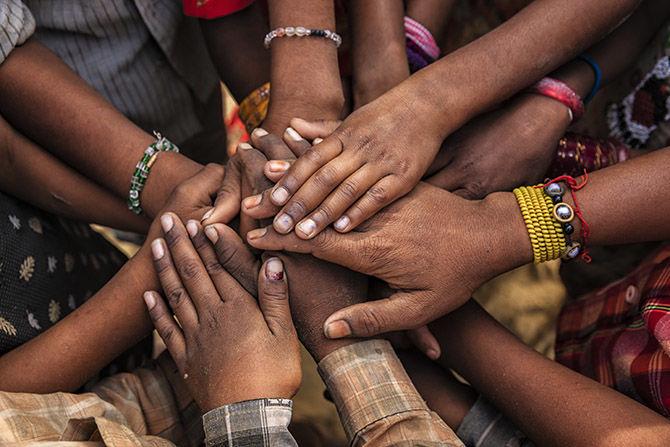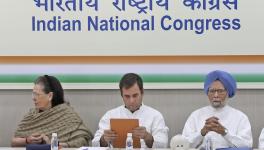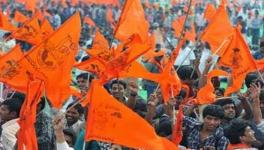The Problematic of Equality in India

There has been for some time an open letter in the public domain from 150-odd scholars and academics from the North-east protesting against the blanket labelling of identity movements in the North-east as “ethno-fascists” by some biased people. Is there any substance in the protest which would seem to fly in the face of tell-tale evidence of violence against ‘outsiders’, or is it a more complex phenomenon requiring a less dismissive and more tentative approach?
To demand an implicit approval of absolute ethnic rights in the country in the spirit of multiculturalism will certainly undermine the paradigm of the state of liberal democracy. There has to be some uniformity in the state before it can provide for basic civil rights and the rule of law, as well as compel respect for diversity which realities of the country deserve. On the other hand the desire to enforce undifferentiated equality may indeed lead to serious inequalities which mask injustice under a veneer of universal rights.
True democracy must both ensure equal rights for all citizens and protection of separate linguistic and cultural identities in variegated conditions of the country.
The North-east,home to numerous such ethnic communities passionately interested in preserving their way of life, language and culture while keeping abreast of vital development for survival in the modern world,is also the field where the conflicting claims of both the above discourses and interests. It has witnessed repeated stirs often erupting into blind violence, and aroused outside the region shocked disgust and condemnation. On the other hand indigenous groups also complain against the smug belief in the mainland that there is no issue here and only narrow-minded xenophobia prevails.
The situation demands both a look at the real socio-economic situation in the country and a re-examination of the constitutional principles.
First the latter. Our Constitution itself had boldly departed from the established liberal democratic paradigm by recognising that people are living in disparate levels of socio-economic and cultural development and though all are united in the imperative aspiration for development, different groups suffer certain disadvantages relative to more advanced groups that need to be addressed squarely in order to turn equality into a real, lived experience for all. Hence the various mandatory protective and affirmative provisions for such disadvantaged groups as SC/STs.
It is significant that people who have enjoyed historical privileges have often grudged and grumbled against such provisions as obstacles to equality,thus bearing indirect witness to entrenched social forces founding fathers of our constitution had been aware of.
There is yet another feature of our Constitution the broad implications of which have not been much discussed. I mean the Sixth Schedule. It is a remarkable admission of the fact that people of certain backward areas are in serious danger of losing out in the unequal race for equal rights and they must be given special protection from the threat of extinction, the fate of many unfortunate peoples in the world. Nehru’s generous patronage of Verrier Elwin's intrepid experiment in NEFA (today’s Arunachal Pradesh) was another case in point, though he might well have been dismayed by later modifications under other dispensations.
These are signposts of another strand in the broad principle of equality, that of the right of distinct communities to preserve their identities with superior claims to available natural resources, social capital and political power in their own ancestral territories.
This has been a relatively neglected area in our constitutional discourse. People not sensitised to such nuances seek to overturn these cherished rights, not to speak of their further clarification and enlargement, provoking animosity and sometimes violence from those who feel suppressed.
That the uneven development of capitalism is accentuated and aggravated by deliberate colonialist policy of constructing the periphery is fairly familiar. The capitalist development of the periphery is distorted and deformed in the interest of imperialism to such an extent that not only are colonies and semi-colonies turned into cheap sources of primary products and labour as well as monopolistically controlled markets of the imperialist centres, but the capitalist classes emerging there are practically doomed to dependency.
It also seems that the model is reproduced on a smaller scale within the former colonies after political decolonisation in less developed parts of such countries. The North-east is a case in point. True, prior to colonial conquest various ethnic communities there were in various stages of transition from tribalism to a feudalism. Wet rice cultivation was replacing Seiden or Jhum cultivation through the patronage of monarchies growing out of tribal chieftain-ship, and trade in its surplus as well as forest products and that of a few cottage industries after meeting consumption needs of kings and the nobility, had been a small part of the economy. But that did not necessarily mean incapacity for independent development.
Colonialism put paid to such hopes and cast the economy and societies of the region in an intractable mould to suit its own needs. The North-east thus descended into a vicious circle that perpetually reproduced its relative underdevelopment. Independence failed to rescue it from its fate thanks to lack of understanding of the country’s leaders who were unable to fully decipher the secret code of colonialism.
In order to maintain its domination and exploitation the British colonial power also engaged in a fateful social engineering on a vast scale. Purely with a view to keeping the wheels of capitalist exploitation of the region whirring it indulged in political and administrative experiments that both aroused hopes of the peoples of the colonised region and frustrated them pitilessly. The undivided Assam of pre-independence days had been the penultimate product of many such experiments and political independence came simultaneously with a drastic partition that brought in its wake immense human misery as well as drastic economic disruption.
Colonial exploitation thrived on merciless revenue extraction, reckless depletion of forest resources, tea plantations and extractive industries like coal, limestone and oil. To run them for increasing commercial profit it was necessary to import people more accustomed to the ways of colonial trade and industry to serve at lower rungs of administration and in the fields at a pittance for wages. Local populations were immersed in rhythms of seasons that controlled their mode of production and its reproduction and were not at all keen for slave labour, nor properly skilled for modern administration.
Hence educated people who knew English and accountancy and were adept in modern professions from neighbouring Bengal as well as indentured labour from tribal regions of eastern and central India (lured into Assam with false premisses by middlemen and forced into virtual bondage by both plantation managers and colonial administration) were imported in huge numbers. The educated among the newcomers had a vested interest in maintaining their hold on such jobs given the overproduction of matriculates and graduates in a most mechanical manner by colonial education. The so-called ‘tea tribes’ were kept insulated from contact with local neighbours and ruled with an iron hand to prevent uprisings. Liquor shops put within reach of labour lines (called ‘coolie lines’) were meant to distract them from their miseries.
Not satisfied with such demographic ruptures the British colonial power tried to put the “waste land” (which actually served native peasantry as areas for winter crops and perennial sources of fish) to better use for revenue farming by encouraging mass migration of Bengali Muslim peasants. These hard-working peasants accustomed to market economy introduced round-the-year cultivation of various crops and increased agricultural production in the province manifold. But they began to pose a serious threat to more sedate native peasantry by creating pressure on available land. The tribal peasants were the most hard-pressed, soon becoming landless.
By the 1930s the migration had turned into an influx that sent natives into a panic. It has to be kept in mind that it provided rulers with a safety valve for the simmering peasant unrest and revolt in areas racked by colonial zamindari exploitation.
The condition of tribal peasants became quite precarious, given the fact that the British had denied them permanent ownership of land by ruling out totally their collective ownership of land. Immigrant peasants used modern economic coercion or legal chicanery to deprive them of their customary rights to the land with the aid of the Muslim League government intermittently in power. Other native peasants also came under pressure as their customary use of wetlands and forests was squeezed by the increasing expansion of commercial agriculture by enterprising and competitive immigrant peasants from Bengal. By the 1930s it became a dominant social and political issue in Assam, and while the Assam Provincial Congress Committee took it up as a major challenge, the Muslim League in Assam, forcefully supported by the vast majority of immigrant Muslims excluding some sensible earlier immigrants, adopted this demand for land for immigrants as a rallying cry.
Because of looming communal clouds in the horizon the national leaders of the Congress (with the exception of Gandhi) hesitated to take a decisive stand. The British seized this opportunity to inflame communal passions by seeming to encourage both sides.
By this time the Assamese middle class had acquired modern education in sufficient numbers to offer strong competition to Bengali job-seekers and professionals. But the keys to modern colonial economy remained out of their reach and there was little accumulation of capital to strengthen their political ambitions. They also cherished the bitter memory of Bengali having been imposed on Assam as its official language from 1840 to 1873 and the prejudiced view of many Bengalis that Assamese was only a “corrupt form” of chaste Bengali. (The politics of language has long been the substance of various national and ethnic assertions).
Thus the two classes came together in a common antagonism to the ‘predatory interests’ of outsiders. On the eve of independence the tribals accepted leadership of the Assamese to make common cause to forces that seemed to imperil their existence, only to be bitterly disappointed by the blithe indifference of the Assamese middle-class to their continuing plight. In fact tribal landlessness grew at an alarming rate in spite of legislative safeguards, eventually leading to tumultuous separatist movements.
The Assamese middle class neither had the economic enterprise nor the political clout in the country to bring about equitable development for all in the state. Indeed the central government encouraged neither. The Assamese middle class, by and large, preferred the easier way of plundering the treasury and developing state institutions that reinforced their cultural domination. There definitely was a chauvinist streak in that approach, but it was also determined by historical forces beyond their control, including the emerging monopolistic ambitions of Indian big capital.
What has resulted out of this stalemate slowly deteriorating into a critical endgame is a hysterical panic of being outnumbered and overpowered. Their cultural assertions seem more and more empty and futile, while the decline of the fortunes of rural population under the neo-liberal tyranny of international capital recalls their wretched conditions in colonial times. While both classes are tempted by the freebies and economic boons granted by saffron politicians they also dread the potential hegemonic claws hidden beneath the velvet gloves.
Belatedly, Left parties are giving a grudging recognition to this ethno-national peril, though they justly apprehend chauvinist turn. Akhil Gogoi has for the first time combined a powerful broad national rhetoric that decisively includes poor immigrant peasants as well as tribals and mobilised a serious challenge to the sweeping saffron wave. This is in the tradition of progressive nationalism of two revered icons of Assamese culture, Jyoti Prasad Agarwala and Bishnu Rabha. And this is precisely the reason why he himself and his followers in his Krishak Mukti Sangram Samiti have been subjected to unprecedented repression by the Saffron government.
This is the essential socio-historical background (with necessary drastic simplification) for understanding the reason behind not only Assamese national but also tribal anxieties. While the tribal communities have no love lost for the Assamese, they also share their dread of being swamped by more powerful forces ‘from outside’. We are dealing with an historical legacy of collective disadvantage and resultant anxiety, requiring a just but firm recognition of both the justice of such claims and the danger of excess. Once such recognition is granted due constitutional status and farther efforts are made towards ensuring equitable development under their own free choice and control, the intermittent and sometimes vicious violence can be contained and dispelled in time.
Uncomprehending dismissal on the basis of appearances will only drive the region into a zone of perpetual bloody conflict.
The author is a socio-political commentator and cultural critic. The views are personal.
Get the latest reports & analysis with people's perspective on Protests, movements & deep analytical videos, discussions of the current affairs in your Telegram app. Subscribe to NewsClick's Telegram channel & get Real-Time updates on stories, as they get published on our website.






















